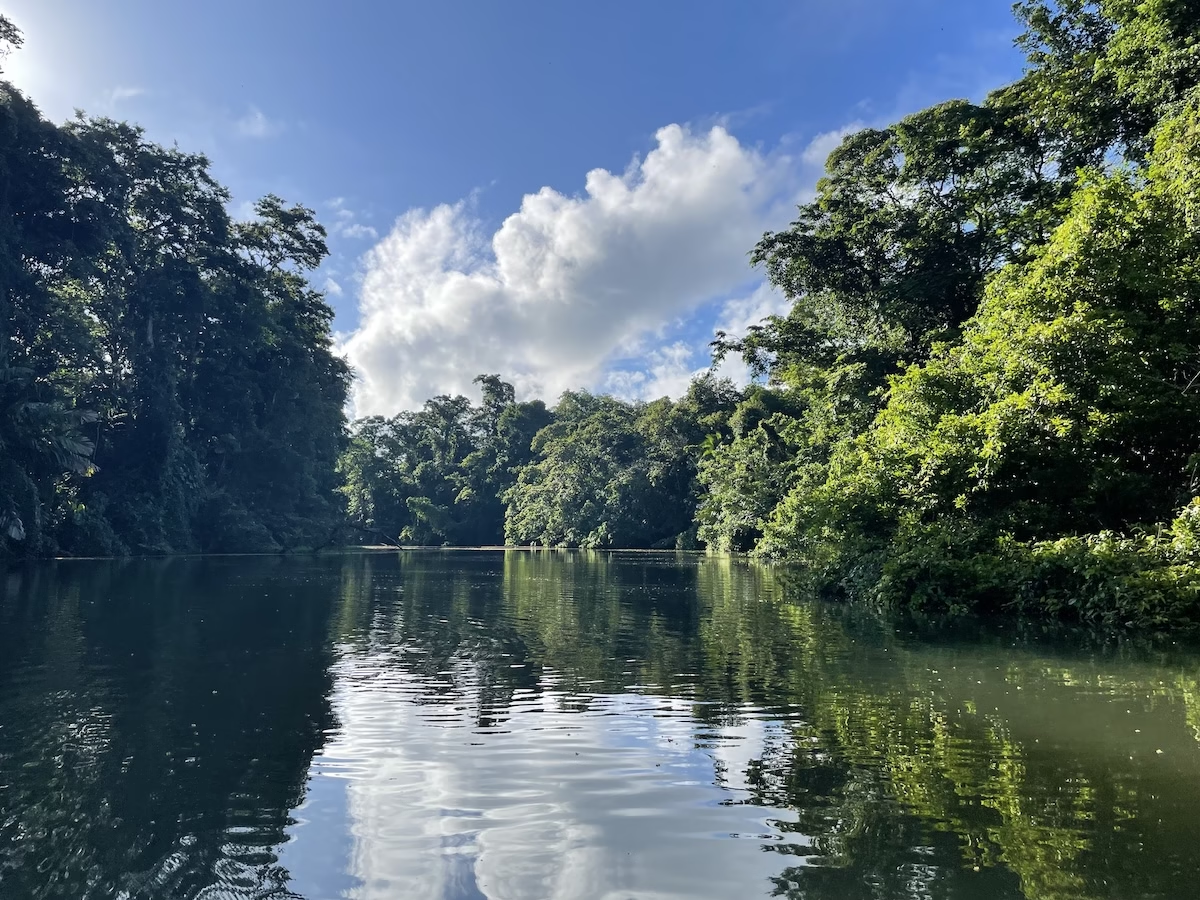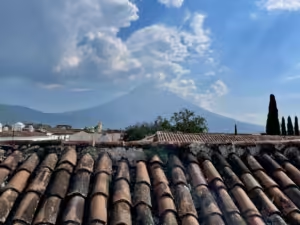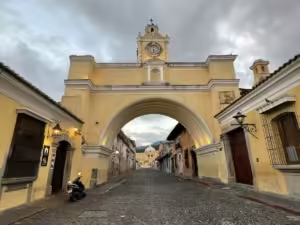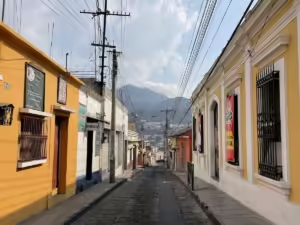The village of Tortuguero, on Costa Rica’s Caribbean coast, is a paradise for nature lovers. Aquatic birds like herons and cormorants stalk the banks of the region’s canal network as caimans glare out from the surface of the muddy brown water. Iguanas and monkeys dangle from low hanging branches and parrots and tropical insects flutter amid the thick jungle canopy. Let’s not forget the massive green sea turtles that lumber up onto the beaches to lay their eggs.
Tortuguero offers some of the best animal spotting opportunities in Costa Rica, a country with no shortage of animal spotting opportunities. There were moments when visiting Tortuguero felt like living through an episode of BBC’s Planet Earth. Sure, it’s a bit more difficult than popping in a DVD or clicking a streaming link, but the experience is more than worth it.
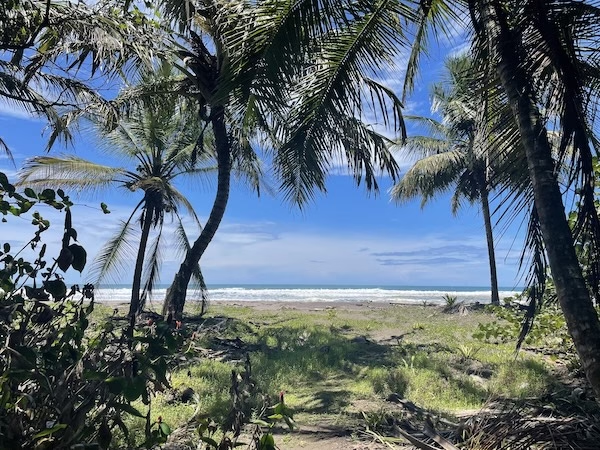
What to Know About Tortuguero
Tortuguero, and the surrounding national park of the same name, are located in a remote corner of Costa Rica’s Caribbean coast. Years ago, lumber companies dug out the area’s famous canals to facilitate shipping. Locals worked in the lumber industry, fishing or made their living hunting sea turtles. Then, Costa Rica made its famous turn towards tourism and environmental protection. Today, the economics of Tortuguero are almost entirely devoted to eco-tourism.
That being the case, the town itself is rather touristy. However, its far less annoying than the fancy gringo enclaves you’ll run into on Costa Rica’s pacific side. You won’t find any high-rise resorts, nightclubs or gluten free yoga boutiques. Tortuguero is simple pedestrian roads and crooked boardwalks lined with souvenir shops, tour agencies and pizza parlors housed in simple, wooden structures. The town is pretty chill, though there’s a marked segregation between the tourist’s and the local’s section.
Some more practical things you should know before visiting Tortuguero:
- You can’t swim here
If the huge waves smashing onto the beach don’t turn you off of swimming, perhaps the threat of rip currents will. The beach is lovely to look at, but not safe for swimming. I’ve read rumors that there are lots of sharks, but our guide told us that wasn’t true. It’s just the ferocious current you’ve got to worry about. Save your swim trunks for beaches further down the coast.
- Bring the money you’ll need in cash
Tortuguero feels isolated, and it is. Supposedly the town has finally gotten an ATM, but I wouldn’t count on it. Some places might take credit cards, but I wouldn’t count on that either. Best to take out enough cash ahead of time to be safe. Along those lines, internet and cell service can also be spotty, but I view that as an advantage.
- Jaguars eat sea turtles
Tourists aren’t the only ones who come to Tortuguero to watch nesting sea turtles. Jaguars descend from the jungle during nesting season to prey on the turtles. Since sea turtles can’t move fast when on land, they make easy prey for a hungry jungle cat. You probably won’t see a jaguar, but you may see the remains of dead sea turtles littering the beach. It’s pretty disturbing. However, it’s also part of nature and the great circle of life.
I have some more thoughts about safety and crime in Central and South America. Read them here: Rethinking Travel Safety and Crime in Latin America
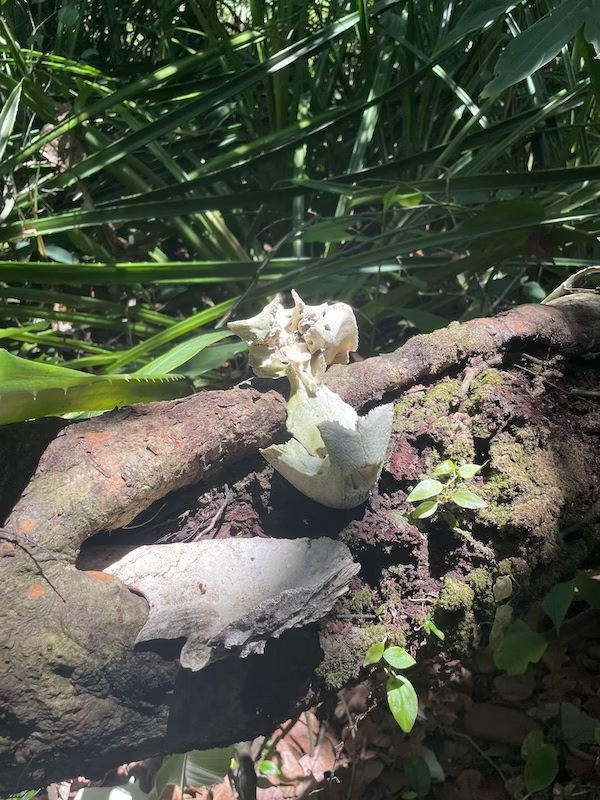
How to Get to Tortuguero Without a Car
There’s no sugar coating it: Tortuguero is a pain in the ass to get to. If you’re rich, or just really short on time and willing to pay for it, you can fly from San José. However, you’ll miss out on part of the adventure.
The public boat ride into Tortuguero passes through some lovely landscape, and is a surprisingly easy and fun way to get to town. The boats all start in a little place at the edge of the world called La Pavona.
You can drive to La Pavona, but then you have to pay to park your rental car. Busing takes a while, but isn’t too difficult. Start in San José and head to the Terminal Gran Caribe. From there, you’ll have to get a bus going to Cariari. Buses leave pretty frequently, but try to arrive as early as possible so you can get there in one day. From San José to Cariari takes about two hours.
In Cariari you’ll need to transfer to the bus heading to La Pavona. This bus leaves from the same terminal, and they try and coordinate departures with the San José bus. You’ve got another hour and a half on the bus from here.
Finally, you’ll arrive in the town of La Pavona. Okay, so La Pavona isn’t a town, exactly. It’s more of a restaurant slash boat dock. But, there’s a public bathroom and the restaurant has decent lunches, drinks and whatever else you might want to fill up on before your boat ride.
A bunch of tour guides will swarm your bus. We were a little worried after coming across some fake tour guide scams elsewhere. Thankfully, our worry was unfounded. The guides in La Pavona are part of the official Tortuguero tourist infrastructure, and they’ll help you arrange activities as well as make sure you get on the correct boat. They’re your friends.
After a bit of a rest, you’ll be herded onto the boat and launched into the green wilderness on your way to Tortuguero. Kick back and enjoy the rural riverside scenery as you head deeper towards your jungle adventure.
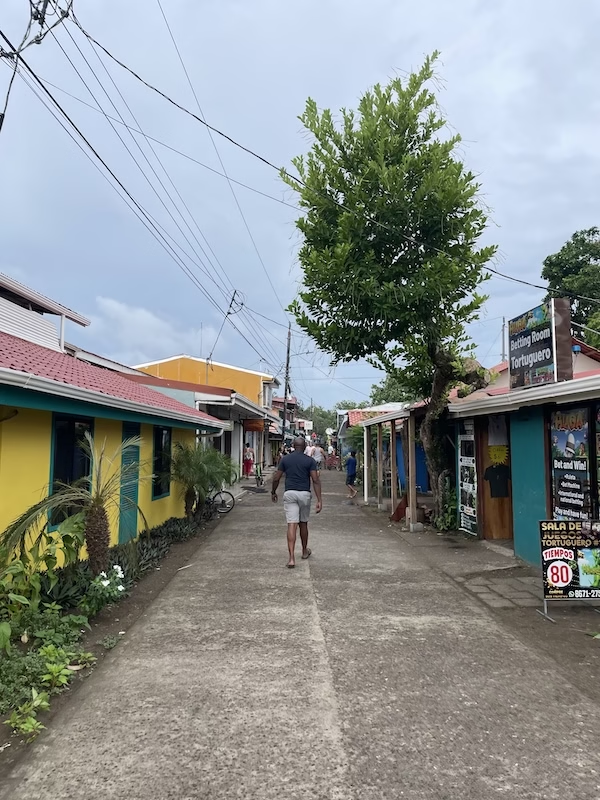
Where to Stay in Tortuguero
Tortuguero is quaint, but its still definitely a tourist town so there are a number of hotels, hostels and other places to stay. We stayed at Casa Turtle Bogue and had a very fine time there. It feels more like an apartment rental than anything else, but it was literally right across from the beach. Click here to book your stay. Use the links through this site and you will be supporting an independent blog at no extra cost to you.
On one of the most fun, but also most stressful, aspects of travel is finding and booking places to stay. These days you have options ranging from dirt cheap hostel dorms to luxurious White Lotus style resorts. Thankfully, the internet is here to make finding accommodation easier.
Hostelworld is the go to app for finding hostels. For everything else, there’s Booking.com. If you book through either of the previous links, I’ll gain a small commission at no extra cost to you.
What to Do in Tortuguero
Activities in Tortuguero are all centered around the national park and the area’s wildlife. You won’t find rowdy expat bars, yoga retreats or zipline tours here. Almost every activity, except for the Jaguar Trail, requires a guide. Although, you could hire a guide for that, too if you want.
We normally like doing things without a guide, but I have to admit the guides here are a good thing. Tortuguero national park protects a fragile eco-system, and the guides are not only expert animal spotters, but they help to keep unruly tourists on the trails and in line. Also, employing locals as guides helps keep money in the community and ensures that local people have an economic stake in protecting the area’s nature.
I can’t say enough good things about our experience with Sambola Tours. They offered a variety of tours, all for very reasonable prices. We had a couple of guides, who were all great, but I have to give a special shout out to Kevin. If Tortuguero is like a live episode of Planet Earth, Kevin is the Costa Rican David Attenborough. The man is super knowledgeable about the local wildlife and his appreciation for nature is infectious. You can book tours through their official website here: https://www.sambolatourstortuguero.com/
The above link is not an affiliate link. I don’t get any money from Sambola Tours, I just really liked them.
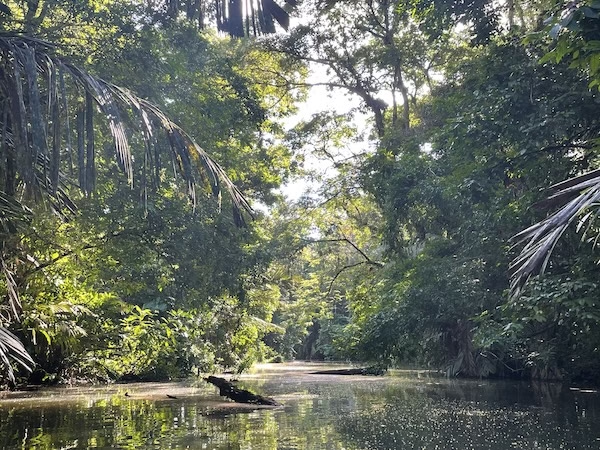
Watch Sea Turtles Lay Eggs
The main reason to come to Tortuguero is for the turtles. Watching a massive sea turtle lumber up on to the beach to lay eggs might be the highlight of your time here. It might be the whole reason you came here in the first place. Tours are only available during nesting season from June to October. They’re also quite strict. No cameras, flashlights or any kind of artificial light is allowed. In fact, nobody is allowed on the beach after dark during nesting season. This is all to protect the turtles and not interrupt the egg laying process.
The sea turtles, though, stubbornly refuse to come to the beach on schedule. You could expect to leave any time starting from 6:30 to almost ten in the evening. We booked our tour, and then sat down to wait. And wait. And wait. They told us, thankfully, that if no turtles came tonight, we could try again tomorrow night. We reluctantly started getting ready for bed when we finally got the message our guide had spotted a turtle.
We threw our clothes back on and rushed to the designated meeting area. Then, we stepped out onto the beach, lit only by the faint light of the moon. A huge black shape sat in the sand before us. It took a moment to realize that the enormous black blob was a sea turtle. After some time, the turtle went into its egg laying trance and our guide turned on his special red flashlight. Hundreds of white sea turtle eggs plopped out onto the sand. The mother turtle flicked her flipper and splashed a bunch of sand into my face. The circle of life continues.
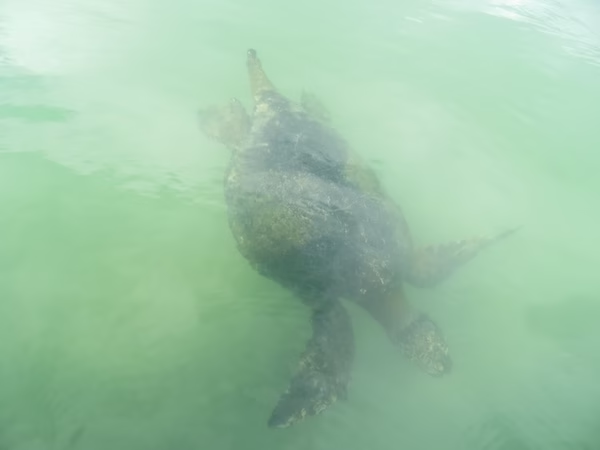
Spot Wildlife on a Canal Tour
There are, of course, more than just sea turtles in Tortuguero. All sorts of creatures live in and around the areas network of meandering jungle canals. Herons, cormorants, lizards, iguanas, caimans, giant grasshoppers and more call Tortuguero home.
This tour, however, might not be for you if you’re a morning person. Or if you’ve been out late watching turtles lay eggs the night before. We started bright and early at 5:30 in the morning. Mist still hung on the water as we floated peacefully through the thick vegetation. It was a great experience, but I could have used another cup of coffee.
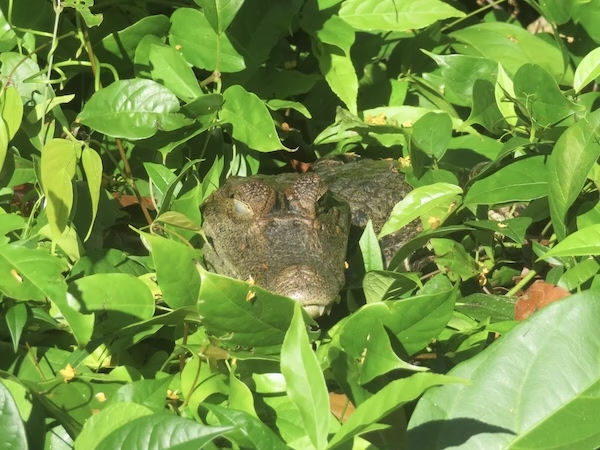
Look for Nocturnal Animals on a Night Tour
Those that don’t want to wake up early will not be disappointed in Tortuguero. All manner of nocturnal creatures come to life after the sun goes down. We saw frogs, snakes, insects, spiders and even a rare, silky anteater. The night tour here was much better than the one in Monteverde. We saw so many more animals, even though we only walked a short distance out of town.
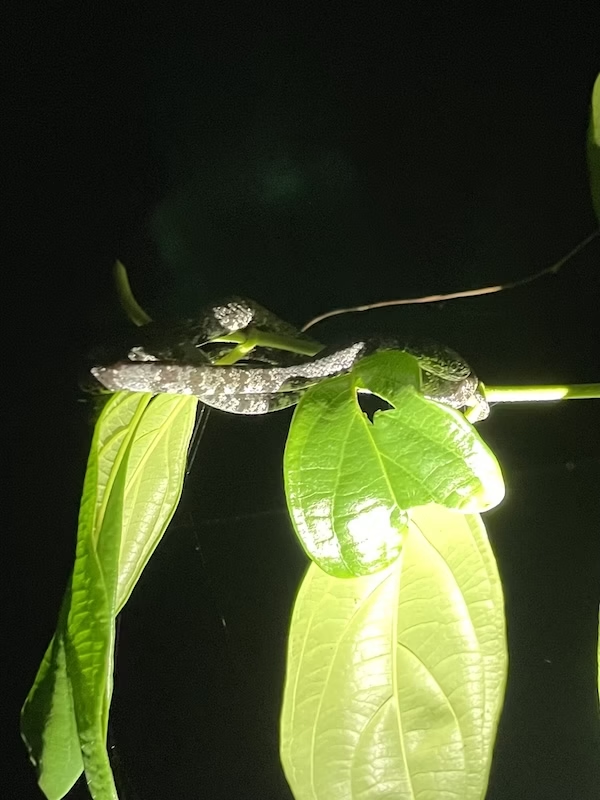
Hike the Jaguar Trail
During the day, you can also walk a short distance out of town. Tortuguero National Park isn’t a hiking park, but the one exception is the Jaguar Trail. This trail starts at the edge of town and leads out into the jungle, following the shore. It’s a nice walk, with plenty of opportunities to see monkeys, lizards, parrots and more. It’s also one of the few activities in Tortuguero that doesn’t require a guide. Despite the fact that this area is often frequented by Jaguars.
As I mentioned before, the jaguars come to the beaches of Tortuguero to feast on nesting sea turtles. It’s a bit macabre, but it’s also how it goes. We didn’t see any jaguars, but we did see a big sign telling us what to do if we saw one. The sign said “don’t run” and “don’t take photos”, even though I imagine those would be my first conflicting instincts if I ever did come across a jaguar.
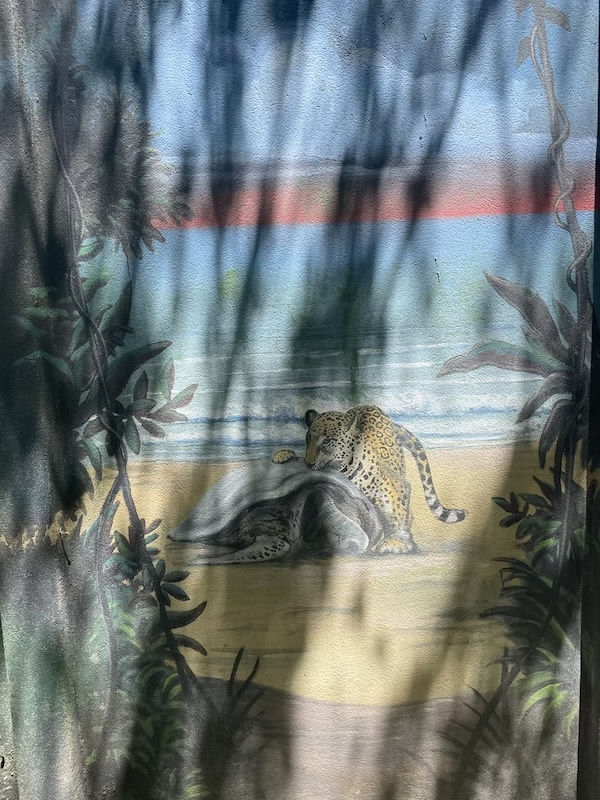
Final Thoughts on Tortuguero
Despite not seeing any jaguars, I had a fantastic time in Tortuguero. The area is beautiful and covered in lush vegetation. Exotic, tropical animals seem to hide around every corner. And, of course, there’s the thrill of witnessing a sea turtle up close. Tortuguero is easily a must visit destination for any wildlife aficionados on a trip to Costa Rica.
Yes, Tortuguero is a pain in the ass to get to, but it’s totally worth it. Yes, you need guides for most things, but the guides were great and the prices were reasonable. The town is touristy, but it doesn’t feel as sanitized or gringofied as other parts of Costa Rica. The remoteness has allowed Tortuguero remain a wild nature experience unlike any other.
Want more accessible places to visit in Costa Rica? Check out our guide, here: Come to Costa Rica: A Travel Guide to the Tourist Hotspot I Still Love
Useful Websites for Traveling Costa Rica
As much as we might long for the days when you could show up to a town with nothing more than a beat-up guidebook and a sense of adventure, today much of traveling involves being glued to our phones making bookings. I’ve compiled some helpful apps and websites below that at least help make those bookings more convenient so you can spend less time staring at your phone and more time exploring at your surroundings. Some of these sites are affiliate links that give me a small commission at no cost to you if you chose to book through them. All of them are sites I’ve used personally and have no problem recommending.
Just be sure to do your due diligence as much as possible. Only hire local guides and try as much as possible to stay in locally owned hotels and hostels so that your hard earned travel dollars actually go to support the local economies of the places you visit.
Booking.com is basically the world’s only hotel booking website. They have hotels, guesthouses and vacation rentals all over Costa Rica.
Hostelworld is the go-to site for booking hostels. If dorm rooms and shared bathrooms are your thing, you’ll find hostels all over Costa Rica.
Get Your Guide offers tours and activities all around the world. Unlike some other sites and apps that do the same thing, you can actually find some reasonably priced deals here.
Centro Coasting is a great website to look up bus routes and times throughout Central America. Schedules change regularly, and the site is sometimes not as up to date as you’d like. However, it’s a good resource to help give you an idea when the buses leave, or at least get you to the right terminal.

